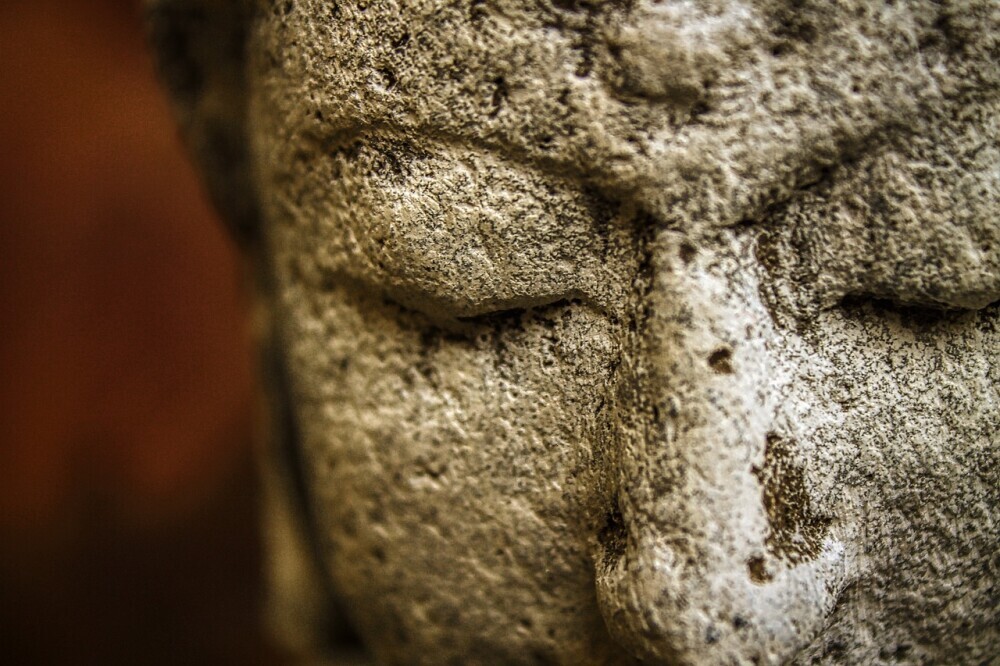Pitre, Brant. Jesus and Divine Christology. Grand Rapids, Mich.: Eerdmans, 2024. xii+320 pp.; Hb.; $39.99. Link to Eerdmans
Brant Pitre is Distinguished Research Professor of Scripture at the Augustine Institute Graduate School of Theology. His Jesus, the Tribulation, and the End of the Exile: Restoration Eschatology and the Origin of the Atonement (Baker 2006) was a solid contribution to the study of the historical Jesus as was his 2017 Jesus and the Last Supper (Eerdmans). He also contributed to Paul, a New Covenant Jew: Rethinking Pauline Theology (with Michael P. Barber and John A. Kincaid; Eerdmans 2016; reviewed here). In this new volume, Pitre argues there are compelling reasons to think Jesus was an apocalyptic prophet, miracle worker, and teacher of parables and that he acted like he was a divine Messiah. Jesus’s divine claims led to charges of blasphemy during his ministry and eventually led to his execution for the crime.
In Historical Jesus studies, the idea that Jesus claimed to be God is usually met with derision and accusations that the author is engaging in apologetics. One of the assured results of earlier quests for the Historical Jesus is that if a saying or event in the gospels implies that Jesus was God, it must have been created by the later church. In the synoptic gospels, Jesus is merely a human; only in the late theological gospel of John is he presented as divinity. Most works on the Historical Jesus ignore the claims, especially the charge of blasphemy (19). Pitre says this view “needs to be left behind as the outdated relic that it is” (329). The assumption in academic studies of Jesus that he was merely human in the synoptic gospels should also be abandoned as “demonstratively false” (330). He concludes, “The ‘smoke’ early divine Christology originated in the ‘fire’ of Jesus’s own divine messianism” (331). In another context, Pitre says he is out to “demolish the scholarly myth—which goes back at least as far as the time of Ernst Renan—that Jesus is not depicted as divine in the Synoptic Gospels” (40).
These are bold claims. To support them, Pitre proposes a methodology that avoids the Form Criticism and the criteria for authenticity. The criteria have fallen on hard times in recent years, and few scholars publishing in Historical Jesus defend them anymore. As an alternative, Pitre uses a triple context method developed by E. P. Sanders in Jesus and Judaism (Fortress 1985). First, Contextual Plausibility within First Century Judaism. Jesus must have been a believable figure in first-century Palestine. This is different than the old criterion of double this similarity. In older Historical Jesus studies Jesus needed to differ from both the Judaism of his day and later Christianity. Pitre is not saying, “If it’s Jewish, it’s Jesus” (29). Second, Coherence with Other Evidence about Jesus. A saying or event needs to fit into other historically reliable reports of what Jesus said and did. Pitre points out that this is a standard principle of historiography. Third, Consequences in the Early Church. This is a form of reception, history, or what Pitre calls a “plausibility of effects.” This is the opposite direction of the old Form Criticism, which relied upon the earliest form of a saying or event, the pre-literary form.). Instead, Pitre asked how the situation in the early church reflected a particular saying or event. There needs to be a “casual thread” (to use Sanders’s) words between Jesus’s life and death and the later Christian movement.
As he works his method, he traces a “plausible trajectory” from Judaism to reports about what Jesus said and did and then to the early church. This is unlike older Historical Jesus studies because he is not interested in recovering the actual words of Jesus (ipsissima verba). Nor does he claim that he is discovering the actual voice of Jesus (ipsissima vox). He is after the “basic substance of a teaching or action” (substantia verborum Jesu). For Pitre, this is what he means by “historical” (35).
For some Historical Jesus scholars, Pitre’s rejection of the classic criteria of authenticity is the correct move, and the search for the substance of Jesus’s words (rather than his authentic voice) is admirable. However, it seems as though he has rejected the old criteria and replaced it with another (less old?) criteria drawn from E. P. Sanders. I happen to think the methodological steps Pitre drew from Sanders and rigorously employs in this book are solid. But scholars in the so-called “Next Quest” may find Pitre’s method as having one foot in the old (now rejected) methods. For example, the essays collected in The Next Quest for the Historical Jesus, edited by James Crossley and Chris Keith (Eerdmans, 2024, review coming soon).
There are several other unique elements to Pitre’s study. Unlike most classic Historical Jesus studies, Pitre uses the Gospel of John as a historical source. For many academics working on historical Jesus, the gospel of John is set aside as late and problematic because of its advanced theology. A final difference is that his first step will always be “to offer a contextually anchored interpretation of any given or deed of Jesus before weighing the arguments for or against authenticity” (39). Typically, Historical Jesus studies begin with the criteria of authenticity to decide whether the saying reflects what Jesus may have said or done. Rarely do these kinds of studies begin with an exegesis of the words of Jesus to determine what the passage actually says. Although technically not part of his methodology, Pitre offers citations from Christian, non-Christian, and Jewish scholars to support his arguments for the authenticity of a passage. The fact that a diverse range of scholars can agree that some saying or event likely goes back to the historical Jesus helps with the plausibility of the argument.
Pitre works this method by examining the epiphany miracles of Jesus (chapter 2), Jesus’s teaching in parables (chapter 3), his apocalyptic teaching (chapter 4), and his trial for blasphemy (chapter 5). For each topic, he selects three examples from the gospels. After a brief exegetical section, he works through the three contextual steps as presented in his introduction.
In Chapter 2, Pitre studies three Epiphany Miracles (Stilling in the Storm, Walking on the Sea, and The Transfiguration). Pitre is clear: not all of Jesus’s miracles were signs of his divinity. But the epiphany miracles “certainly were taken as signs he was more than human” (108). Since these three examples come from the Synoptic Gospels, “a close study of the epiphany miracles demolishes the modern myth that Jesus only speaks and acts as if he is divine in the fourth gospel” (108).
In Chapter 3, he examines three parable-like sayings (Greater than the Father and Nother, No One is Good but God, and the Riddle of David’s Lord). These examples are not traditional parables in the sense of the Prodigal Son or the Good Samaritan. Jesus used Psalm 110 to suggest to his followers that the Messiah was not merely a human descendant of David. In fact, the Messiah was to be something much more: the preexistent, divine son of God (168).
In Chapter 4, Pitre describes Jesus as an apocalyptic prophet by examining examples (The Heavenly Son of Man, the John the Baptist Question, and the “Apocalyptic Thunderbolt”). By the “Apocalyptic Thunderbolt,” Pitre refers to the Johannine-like saying in Matthew 11:25-27 and Luke 10:20-21. In this context, Jesus claims that God’s omnipotence has been given to him. Jesus possesses a kind of divine sonship that transcends the divine sonship of Israel in the Hebrew Bible. For Pitre, this explains the apocalyptic Christology of Paul (241), which is quite similar to the apocalyptic self-understanding of Jesus.
Finally, in chapter 5, he examines the bedrock historical event of the gospels, the crucifixion of Jesus for blasphemy. Three examples are drawn from the gospel of John: Picking up Stones (John 8:48-59), Making Yourself like God (John 10:22-39), and the Charge of Blasphemy, which led to Jesus’s execution. Following John Meier, “a Jesus whose words and deeds would not alienate people, especially powerful people, is not the historical Jesus” (Meier, Marginal Jew 1:177, cited 246). So, what did Jesus do that resulted in his execution? Many scholars have observed that, from a Jewish perspective, messianic pretenders do not merit punishment (249). Nor is Jesus charged with its threatening the temple (298). When Jesus is questioned, he puts himself into the context of Psalm 110 and Daniel 7:14. He is the divine figure from these two messianic passages. The high priest in the Sanhedrin understood clearly what he claimed, so Jesus was condemned to death for blasphemy against God (304). Pitre agrees with E. P. Sanders: “I have no doubt that Jesus died for his self-claim” (cited 326).
Conclusion. In his acknowledgments (353-54), Pitre describes his first encounter with John Meier’s The Marginal Jew. He studied with Meier at Notre Dame while Meier was working on volumes 3 and 4. Unfortunately, Meier died before completing the last planned volume on the enigmas of Jesus’s self-designation. To a certain extent, Pitre’s Divine Christology fills that gap. Because the methods of Historical Jesus research have shifted considerably since Meier’s project began, I suspect that Pitre’s conclusions on historicity might differ from Meier’s.
NB: Thanks to Eerdmans for kindly providing me with a review copy of these books. This did not influence my thoughts regarding the work.

 1 month ago
49
1 month ago
49











 English (US) ·
English (US) ·